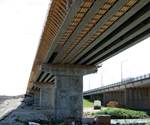Looking for butt-kickers
HPC editor-in-chief Jeff Sloan is looking for that larger-than-life bridge builder or automaker that is willing to take a Boeing-like composites plunge so everyone else takes a whipping for a bit and has to get onboard to keep up.
My son participates on the speech and debate team in high school. Before a debate, he and a partner research a question and then prepare to argue both in favor of and against the assertion posed by the question. No matter what the debater’s personal feelings are on the topic, he or she must have command of all pertinent facts, pro and con, and be able to make a case either for or against with passion and conviction. As my son and others argue so forcefully, armed with apparently unassailable facts and figures, I often wonder: What does it take to change the mind of a person who is firmly wedded to a belief? My son is not really trying to change anyone’s mind in his debates; he’s just trying to prove to the judge that his command of information, combined with a compelling delivery, is better than his opponents’.
But what about bigger issues? Do you not believe that global warming is caused by human-generated pollutants? If not, how much data and evidence would you need to be convinced? Do you not believe in animal and human evolution as originally developed by Charles Darwin? If not, how much data and evidence would you need to be convinced? Is there no amount of evidence that will change our thinking about some of our very basic beliefs?
Bringing this closer to home: Composite materials, pound-for-pound, are obviously superior to legacy materials, including steel and aluminum, in many applications. They’re better in many bridge applications, they’re better on boats, they’re better on wind blades, they’re better on cars and trucks.
You don’t have to read more than a few issues of CT to find ample and compelling evidence that composites not only are doing the job in many demanding applications, but could be doing more in many other applications.Take, for instance, this month’s cover story on composite rebar (see "Hidden revolution ...." under "Editor's Picks," at right); the benefits of composite rebar are so numerous, it’s hard to read this report and not wonder why this application didn’t take off years ago. Isn’t there enough evidence to convince civil engineers everywhere of the advantages of composites?
That, of course, is not the question. There is plenty of evidence. Composites’ main problem is that they are not steel or aluminum or concrete, and moving civil engineers or automotive designers away from those materials will require much more than just a compelling argument.
I asked one composites industry veteran the other day what it would take to get the automotive industry, for instance, to embrace composites more thoroughly. His answer was simple: “An ass-kicking. An automaker willing, like Boeing, to take the plunge, succeed, be profitable and in the process, drag the rest of the automotive industry along with it.”
So, maybe that’s our answer: Stop preaching to the choir and start looking for that larger-than-life bridge builder or automaker that is willing to take a Boeing-like composites plunge so everyone else takes a whipping for a bit and has to get onboard to keep up. We’ll keep our eyes peeled, but let us know if you run across another Boeing or two.
Related Content
Composites and the call to space
CW editor-in-chief Scott Francis discusses the role of composites in recent and upcoming space missions.
Read MoreYour must-have composites industry guide for 2025
Welcome to CW’s annual SourceBook, your guide to suppliers of machinery, materials, software and other services for the composites industry.
Read MoreFall events chart the course for composites
A busy fall brings industry-leading events and recognition for operations setting new benchmarks for excellence.
Read MoreThere's a lot up in the air
Trade tensions and supply chain shifts — what the U.S.-China dispute means for aerospace and composites suppliers.
Read MoreRead Next
A hidden revolution: composite rebar gains strength
Fiber-reinforced plastic (FRP) replacing coated steel in more reinforced-concrete applications.
Read MoreScaling up, optimizing the flax fiber composite camper
Greenlander’s Sherpa RV cab, which is largely constructed from flax fiber/bio-epoxy sandwich panels, nears commercial production readiness and next-generation scale-up.
Read MoreCeramic matrix composites: Faster, cheaper, higher temperature
New players proliferate, increasing CMC materials and manufacturing capacity, novel processes and automation to meet demand for higher part volumes and performance.
Read More












